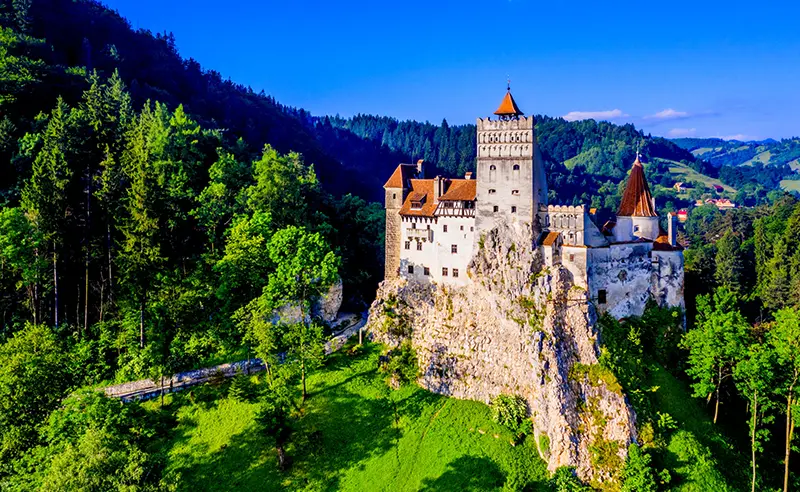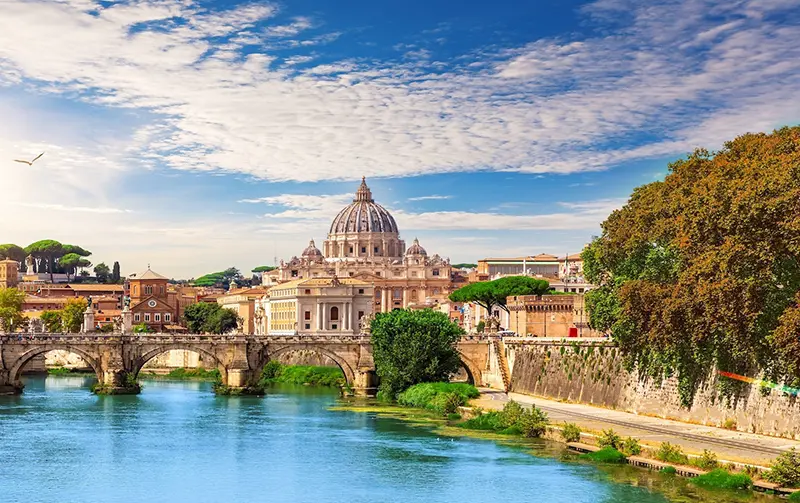Photo of the Tabernas Desert: bare rocks under the sun that first turned the earth into salt. The Tabernas Desert has been depicted in many movies about the Wild West.
Almeria Desert
The Campo de Tabernas, Europe’s only desert, is deep in the eastern part of the Casta de Almería coast.
8 million years ago, sea waves were walking on the site of the current desert of Tabernas. 4 million years ago the area was separated from the ocean by the Sierra de Alamilla mountain range and a lake was formed. Rivers flowed into it, bringing sediment: sand, clay and gypsum from the nearby mountain ranges. Then the rivers disappeared. Separated from its water sources, the lake evaporated under the rays of the hot sun. Gone forever, it left a thick layer of salt that has survived to this day and with which everything around it is soaked.
Water erosion has formed the unique “lunar” landscape of Tabernas. The dense marl is almost impermeable to water, and during the rare rains, water washes new and new stream beds. The small amount of moisture that does linger under the rocks is enough to form the fragile flora and fauna of Tabernas. After the rain, for a short time, the desert plants bloom, and it is transformed-not for long.
During the day, under the scorching sun, the air heats up to +48° C, but in the winter night it can cool down to 0° C. The desert’s climate has been shaped by the surrounding mountain ranges, causing Tabernas to be in the “rain shadow” region. The desert is located on the leeward side of the Sierra Nevada mountain range. Here the moist air from the Atlantic cools and leaves all the water on the slopes, and Tabernas no longer gets any.
Of the living creatures that survive in the salty desert conditions, only such as the horseshoe and ladder snake, pearl and red-tailed lizards, and rats. And among the feathered birds are the red rock ptarmigan and the little plover and the desert bullfinch, which come from Africa to breed and fly north. But the true master of the desert is the half-meter hawk eagle, the largest raptor of the Tabernas.
The Sierra de los Filabres in the north and the Sierra de Alamilla in the southeast completely enclose the Tabernas Desert from the penetration of the humid Mediterranean wind, turning the area into a “rain trap.
The Tabernas Desert, aka the Almeria Desert, is the setting for hundreds of films in the specific spaghetti western genre: filmmakers have managed to convince the viewer that this is what the American Mojave Desert looks like. The role of Indians and Mexicans was played by colorful Spanish gypsies.
Unlike much of Europe, no forest ever grew in the Tabernas Desert, not even in the most ancient times. Much of the area lacks even a hint of soil that is brought down by rain, and plants such as esparto feather grass and gypsophila (tumbleweed) have adapted to live right on the rocks. The taberna cottongrass of the Pinaceae family is a unique plant that literally “pushes” salt out of its leaves. In total, there are 2500 plant species in this lifeless desert.
People began to settle in the desert 4.5 thousand years ago: the wild place seemed an ideal refuge from enemies. This area was probably the very first place where in the early 8th century the Arab conquerors set foot when they arrived to conquer the Iberian Peninsula. The people who lived in the desert built an intricate system of water supply based on draining the marl, breaking through underground canals through which water was pumped to the fields. Under the hot sun, oranges and olives were grown here.
And nowadays, as in the old days, the saltwort plant is harvested here to obtain alkaline salts and produce a special soap. Another treasure of the desert is thyme, used in perfumery and as a spice.
The Tabernas Desert has one interesting feature: almost everyone on our planet has seen it, but the vast majority do not know what it is called. In the 1960s, it was “discovered” by filmmakers: it became an ideal natural setting for making movies, because it was cheaper to shoot here. Tabernas “played” the role of the Middle East (scenes of crossing Sinai) in Lawrence of Arabia (1962) and Indiana Jones and the Last Crusade (1989), Africa – in Cleopatra (1963) and Patton (1970). But it was Italian director Sergio Leone who made Tabernas most famous, shooting here the classic trilogy of spaghetti westerns about the American Wild West: A Fistful of Dollars (1964), A Few Dollars More (1965) and The Good, the Bad and the Ugly (1966). Scenes from Game of Thrones and Doctor Who were also filmed here. Now there are three Western-themed parks on the site of the shooting.
General Information
- Type: Mediterranean, stony.
- Language: Andalusian dialect of Spanish.
- Religion: Catholicism.
- Currency: euro.
- Nearest airport: Almeria.
- Surface area: 280 km2.
- Lowest point above sea level: 400 m.
- Highest point above sea level: 900 m.
- Location: 30 km north of Almeria.
Climate and weather
- Subtropical, Mediterranean, dry.
- Average temperature in January: +9°C, min. -21°С.
- Average temperature in July: +24.5°C, max +48°C.
- Average annual precipitation: About 200 mm.
- Average annual relative humidity: 55-60%.
- Average annual sunshine: 3000 h.
Economy
- Agriculture: plant growing (olive tree), cattle breeding (sheep breeding), collection of thyme, saltwort and esparto.
- Service industries: tourism.
Attractions
-
Natural
- The Tabernas Desert National Reserve
- Cabo de Gata Reserve
- Caves of Cueva de Jeso
-
Historical
- Los Miguelares Mound (Santa Fe de Mondújar, 4,700 years old)
- The ruins of the castle of Alcazaba (Tabernas, XI-XII centuries)
-
Other
- Texas Hollywood (Fort Bravo), Mini-Hollywood (Oasis), and Western Leone Theme Parks
- Zoo
- Cactus Garden
- Cinema Museum
- Carriage and Carriage Museum
- Solar power plant “Almeria solar platform”
Fun Facts
- Moricandia foetida, the name of an endemic annual herbaceous plant of the Tabernas Desert, translates from Latin as “moricandia stinky.” To escape being eaten by rabbits, it emits a foul odor. It is mistakenly thought to be named after the famous Italian composer Ennio Morricone (born 1928), author of music for several spaghetti westerns filmed in the Tabernas Desert. It bears the name of the Italian-Swiss botanist Stefano Moricanda.
- Since ancient times, esparto was brought to Tabernas from the sea coast: this variety of feather grass was used to make fibres that made excellent fishing nets. Today, esparto is used to weave baskets.
- The Tabernas desert is almost the only place in Europe where the hawk eagle is not threatened with complete extinction. There are no hunters here, no power lines either, and small birds and animals like rats and rabbits abound in the desert, and there is nowhere for them to hide in the absence of greenery and shade.
- A few kilometers from the desert there is the Almeria Solar Platform, the largest solar power plant in Europe.
- The Mini-Hollywood theme park is a set of a typical mid-19th century U.S. Wild West town built for the filming of the movie A Few Dollars More. Of the 14 Wild West towns built at various times to make movies, only three survived and became theme parks. The total number of films shot in Tabernas has now reached 600.




